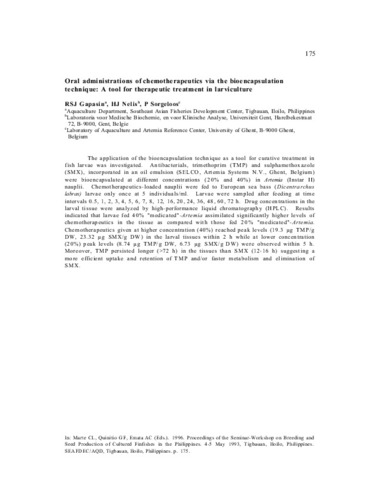Antioxidant activities and selenogene transcription in the European sea bass (Dicentrarchus labrax) liver depend, in a non-linear manner, on the Se/Hg molar ratio of the feeds
- Global styles
- MLA
- Vancouver
- Elsevier - Harvard
- APA
- Help
Share
Abstract
Feeding 3.9 and 6.7 mg Hg/kg (Se/Hg molar ratios of 0.8 and 0.4, respectively) for 14 days negatively affected Dicentrarchus labrax growth and total DNTB- and thioredoxin-reductase (TrxR) activities and the transcription of four redox genes (txn1, gpx1, txnrd3, and txnrd2) in the liver, but a diet with 0.5 mg Hg/kg (Se/Hg molar ratio 6.6) slightly increased both reductase activities and the transcription of txn1, gpx1, and txnrd2. Feeding 6.7 mg Hg/kg for 53 days downregulated the genes of the thioredoxin system (txn1, txnrd3, and txnrd2) but upregulated gpx1, confirming the previously proposed complementarity among the antioxidant systems. Substitution of 20% of the feed by thawed white fish (hake) slightly counteracted the negative effects of Hg. The effects were not statistically significant and were dependent, in a non-linear manner, on the Se/Hg molar ratio of the feed but not on its Hg concentration. These results stress the need to consider the Se/Hg molar ratio of the feed/food when evaluating the toxicity of Hg.
Suggested Citation
Espino, M., Eguiraun, H., Diaz de cerio, O., Carrero, J. A., Etxebarria, N., & Martinez, I. (2022). Antioxidant activities and selenogene transcription in the European sea bass (Dicentrarchus labrax) liver depend, in a non-linear manner, on the Se/Hg molar ratio of the feeds. Biological Trace Element Research , 200, 2365-2379. https://doi.org/10.1007/s12011-021-02835-7
Type
ArticleISSN
1559-0720Collections
- Journal Articles [1258]
Except where otherwise noted, this item's license is described as Attribution 4.0 International (CC BY 4.0)
Related items
Showing items related by title, author, creator and subject.
-
Research on marine and freshwater fishes
Emata, Arnil C. (Aquaculture Department, Southeast Asian Fisheries Development Center, 1995)Most of the fish research at SEAFDEC AQD in 1992-1994 was on milkfish. Studies were conducted on year-round spawning through hormonal or environmental manipulation; optimum lipid and protein levels and ration size for ... -
Oral administrations of chemotherapeutics via the bioencapsulation technique: A tool for therapeutic treatment in larviculture
Gapasin, R. S. J.; Nelis, H. J.; Sorgeloos, P. (Aquaculture Department, Southeast Asian Fisheries Development Center, 1996)The application of the bioencapsulation technique as a tool for curative treatment in fish larvae was investigated. Antibacterials, trimethoprim (TMP) and sulphamethoxazole (SMX), incorporated in an oil emulsion (SELCO, ... -
Drug assimilation in the tissue of European sea bass (Dicentrarchus labrax) fry delivered orally through bioencapsulation
Gapasin, R. S. J.; Nelis, H. J.; Chair, M.; Sorgeloos, P. (Wiley-Blackwell, 1996)Assimilation levels of the antibacterials trimethoprim (TMP) and sulfamethoxazole (SMX) in sea bass (Dicentrarchus labrax) fry tissue administered orally were investigated. A 1:5 TMP and SMX combination incorporated in an ...








